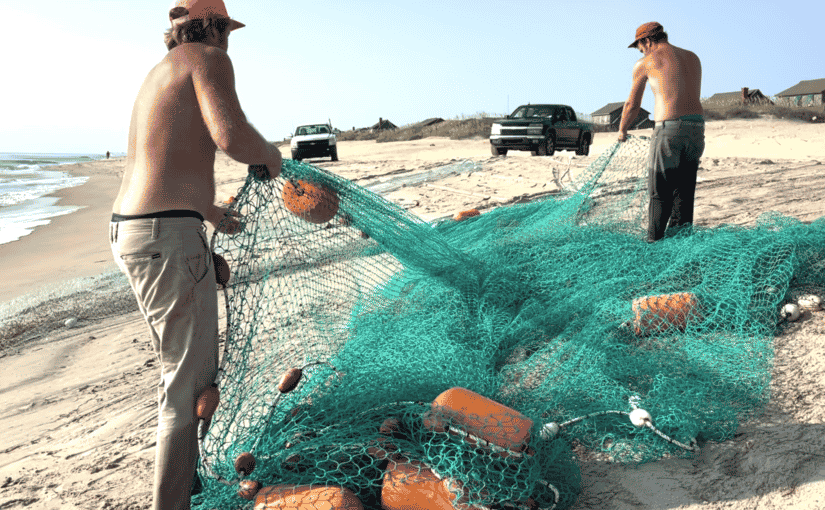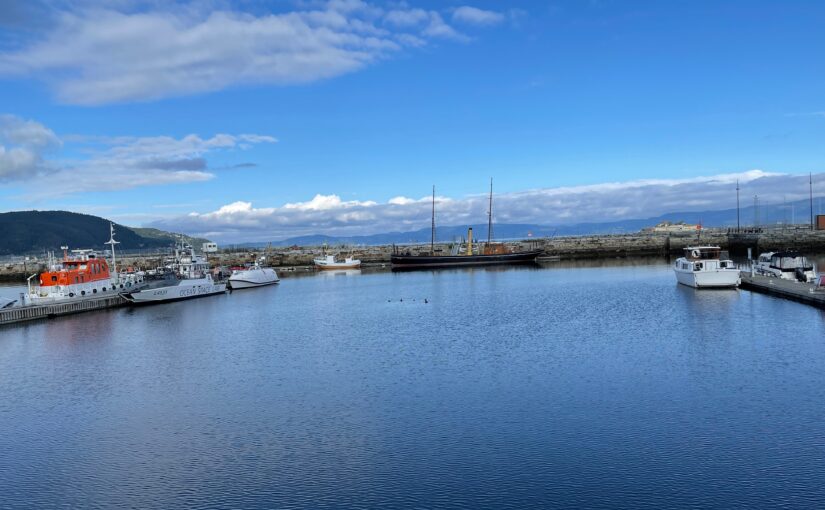The Nags Head beach on North Carolina’s Outer Banks stretches for eleven glorious miles. Early-rising tourists catch the sunrise over the Atlantic.

Walkers and runners and their dogs dodge the surf along the water’s edge. As the sun gets high beachgoers cluster on the sand with umbrellas and beach chairs. Now and then you see anglers casting lures out past the surf,
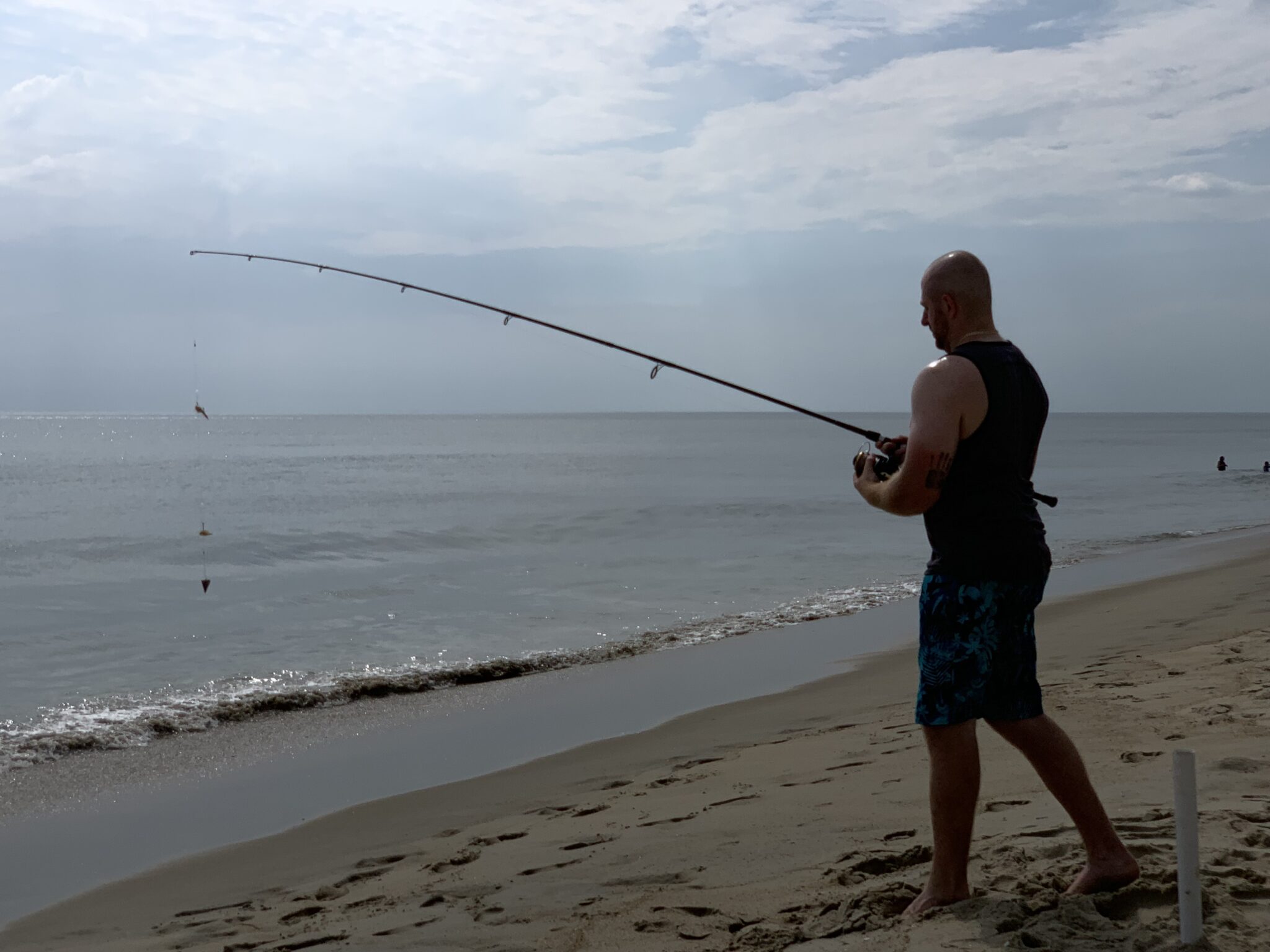
but the sunbathers outnumber them by far. It’s easy to forget that these islands were a commercial fishing culture long before the tourists came to town.
One morning at the end of July, though, we met three men determined to bring the fishery back to the Nags Head beach. We found them busily arranging a big green net that they would attach to the back of a blue pickup truck. There was not a boat in sight. Did they expect to find fish in the sand?
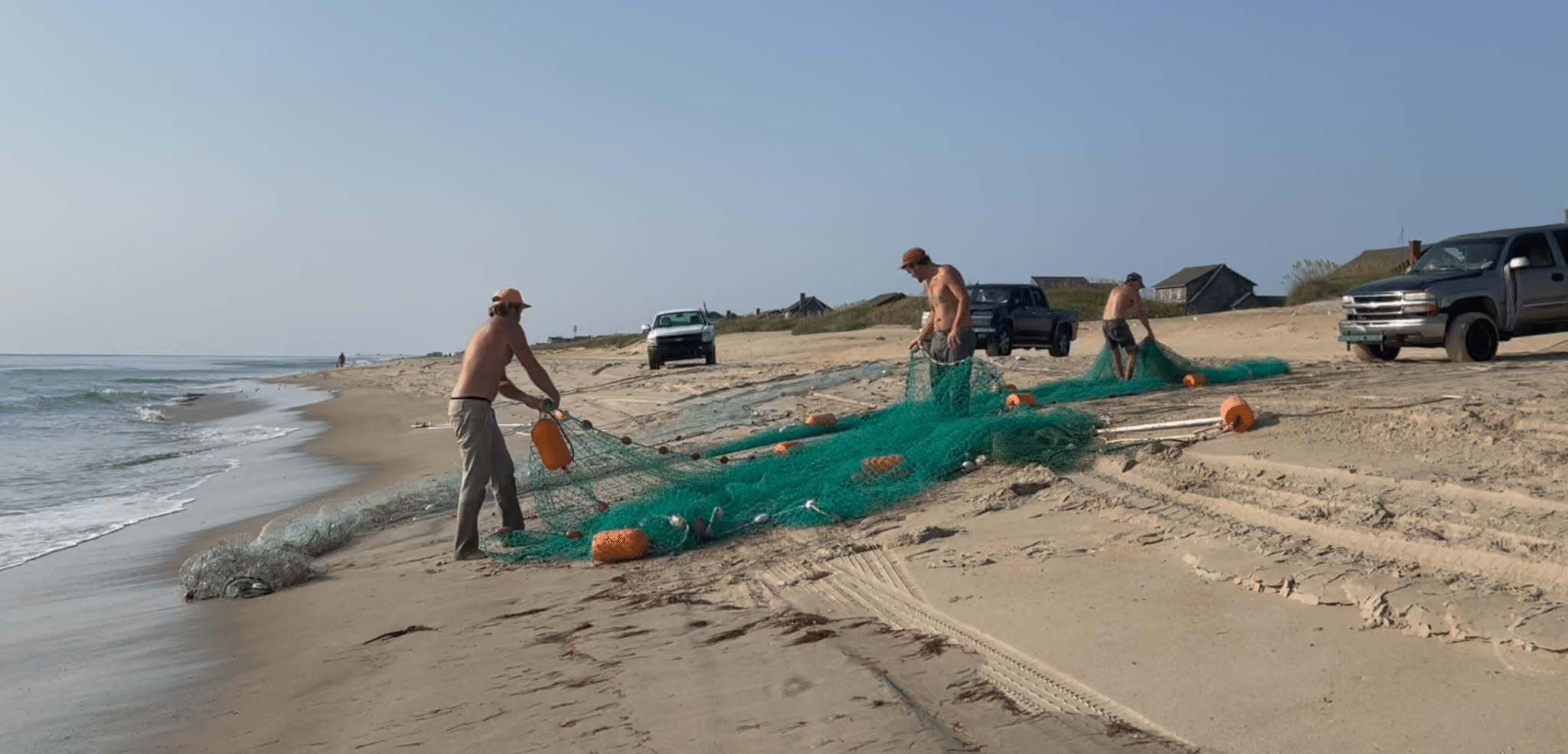
Jake Griffin, the thirty-year-old managing the effort, explained that using a truck for fishing on the beach wouldn’t be permitted today, but his family had fished here for generations and when rules changed their commercial fishing license grandfathered them in.
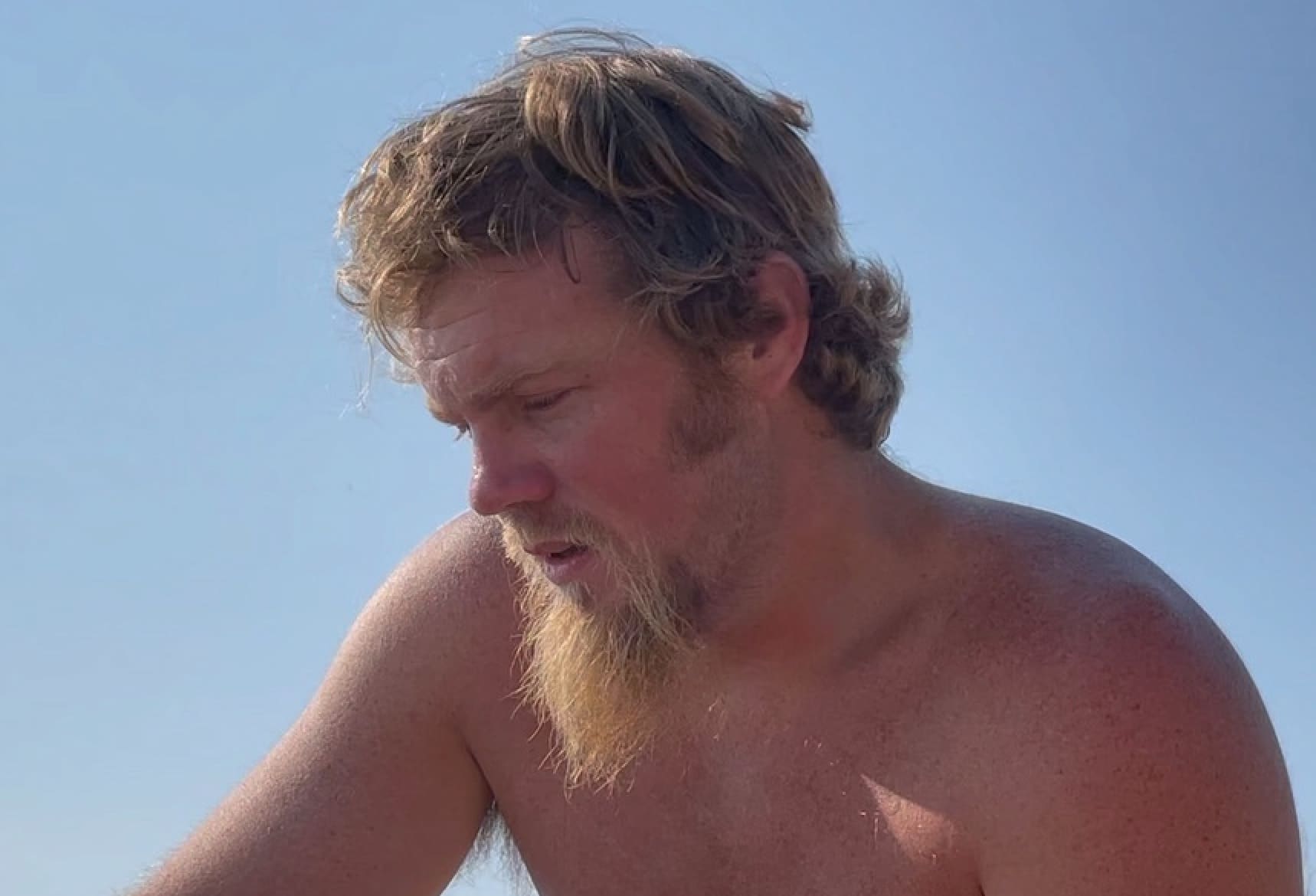
The setup grew clearer as we watched. I worked on a shrimp boat in the Gulf of Mexico back in my college days, and know that a shrimp trawler has a mast with two outriggers. Cables spool out from each of the outriggers as the nets fall behind the moving boat, and “doors” at the net attachment points open each net’s mouth as water pressure pushes them apart. Jake and his friends Ben Brown and Bobby Boyd were trying to rig a trawling net to do what Jake called tow hauling or haul seining. Their trawling net had one foot on land and just one door in the water.
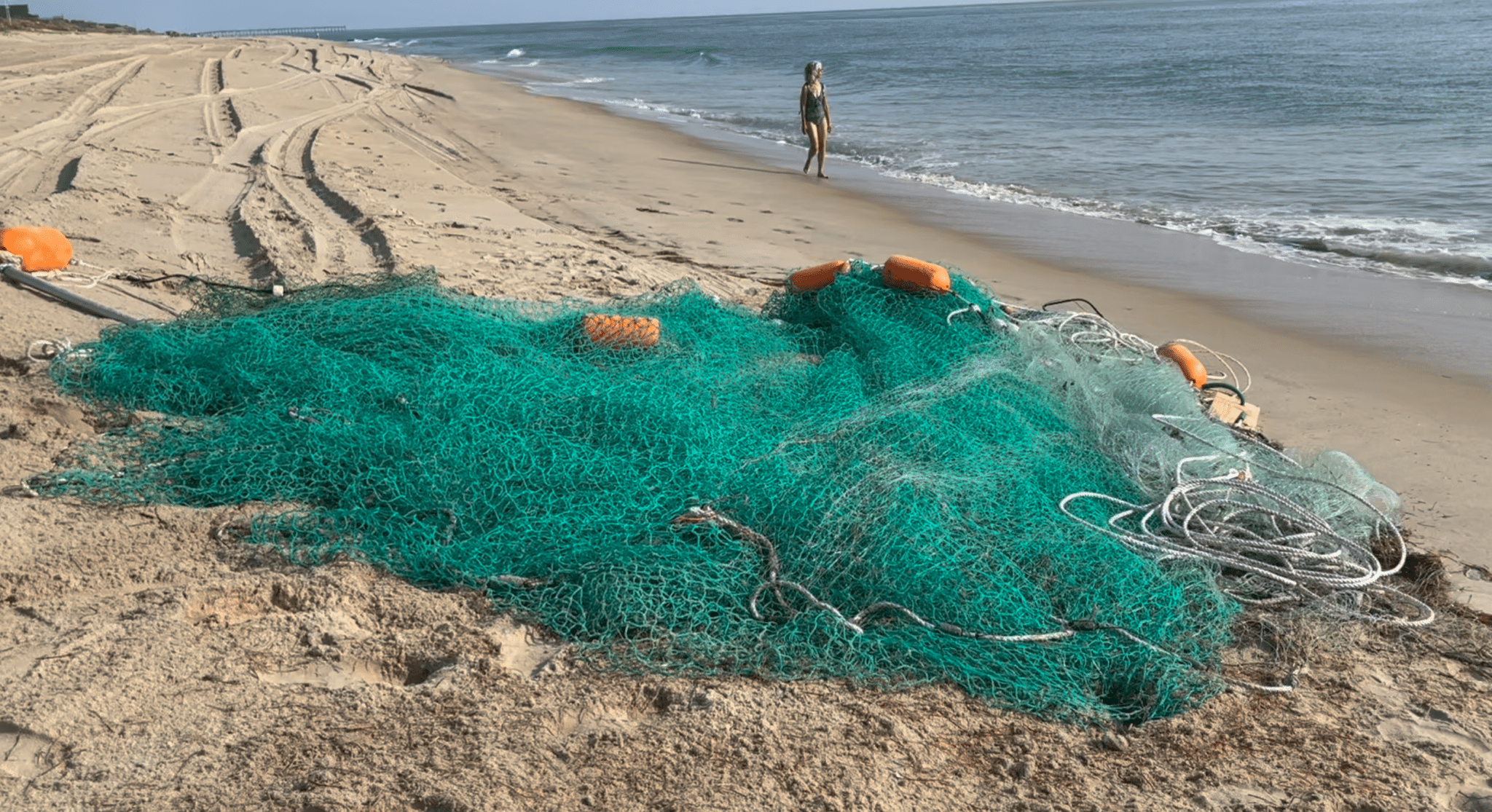
We noticed that the pickup’s tires were softened to give it traction in the sand. The net door lay in the pickup bed. It was a rectangle of three wood slats bolted to cross pieces, about six feet long by three feet wide. Its four-point chain attachment linked in turn to a cable that would reel out of the truck bed. Jake and his friends stood over the door, hammering here, drilling there, trying to find the adjustment that would set it at the correct angle to the water. As Jake put it, “The angle has to be enough to open (the net) about 80 to 100 yards, but not be too ‘rank’ and create too much strain against the truck.”
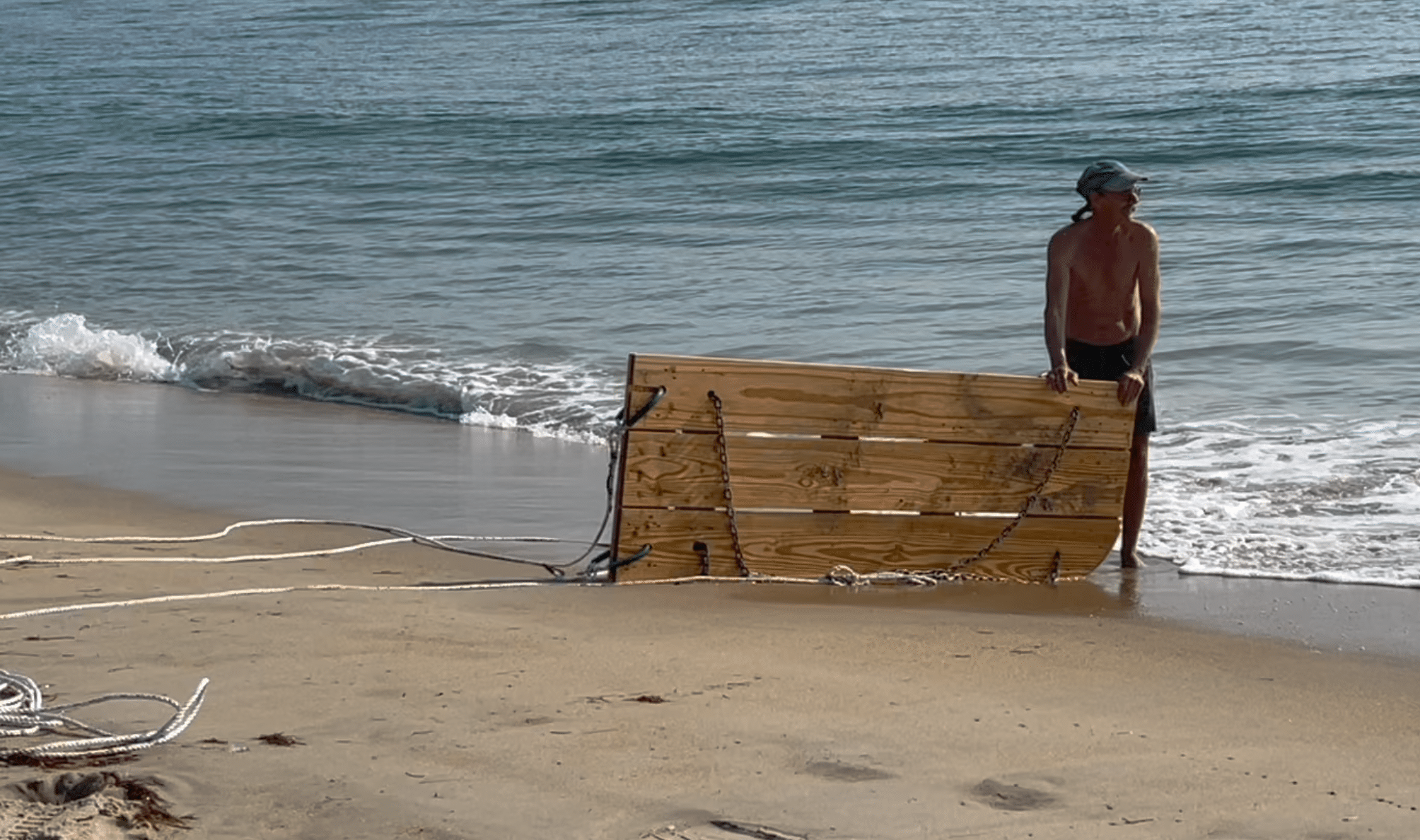
But it’s a hard adjustment. The water pressure pushes the door to open the net, but — Jake again — “the drag from the net through the water wants to change the angle of the door by pulling on the tail end of the door.” That straightens the door and keeps it from opening the net.
After a few minutes, they were ready to make a trial run.
Jake took the wheel and eased the truck forward. Bobby floated the door through the surf, the net trailing behind. When the lines were tight Jake accelerated slowly down the beach, heading south. But the net didn’t open more than thirty feet or so. It trailed out behind in water too shallow, too bare of fish. Jake went a quarter mile and stopped. The men pulled the net back onto the beach.
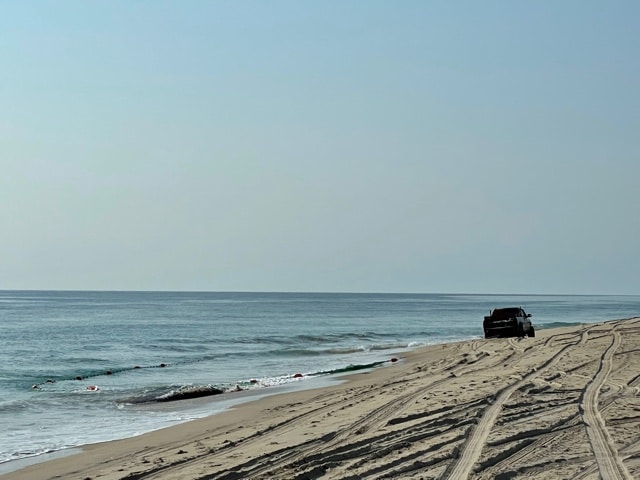
Afterwards, Jake was philosophical. “It’s a new trial, a new challenge for somebody who fishes like myself,” he said, stroking his sun-bleached blond beard. “Trying to learn something and always improve, that’s what makes our fisheries better, and that’s what we’re working on here now.”
“You’ve got to catch a lot of fish,” said Jake’s father Charlie Griffin, a tournament fishing champion. “You catch twelve pompano, that’s dinner. You’d make more money working for twelve or fifteen bucks an hour at a Seven-Eleven. But if he can get the net to pull off the beach and pull it down the beach a mile or two, he’ll catch a bunch of fish. Right now he’s just trying to get it figured out.”
Two weeks later, Jake told us in an email that he still didn’t have it figured out. “We haven’t got it perfected yet but certainly closer, haha,” he wrote. “A lot of tinkering and adjusting.”
When we saw them, he and his partners were working under the strict gaze of local law enforcement making sure they didn’t break the rules that give “pedestrians, swimmers and bathers” right-of-way over vehicles operated on the beach. “They watch us like a hawk,” he wrote, “because it’s a fishery that the public can see and be part of.”
But they’ll keep working. To create a new fishery that recalls dory seining off the beach that existed seventy-five years ago, to restore a vanished part of the Outer Banks and a link to his family’s past, Jake said it would be worth it.
